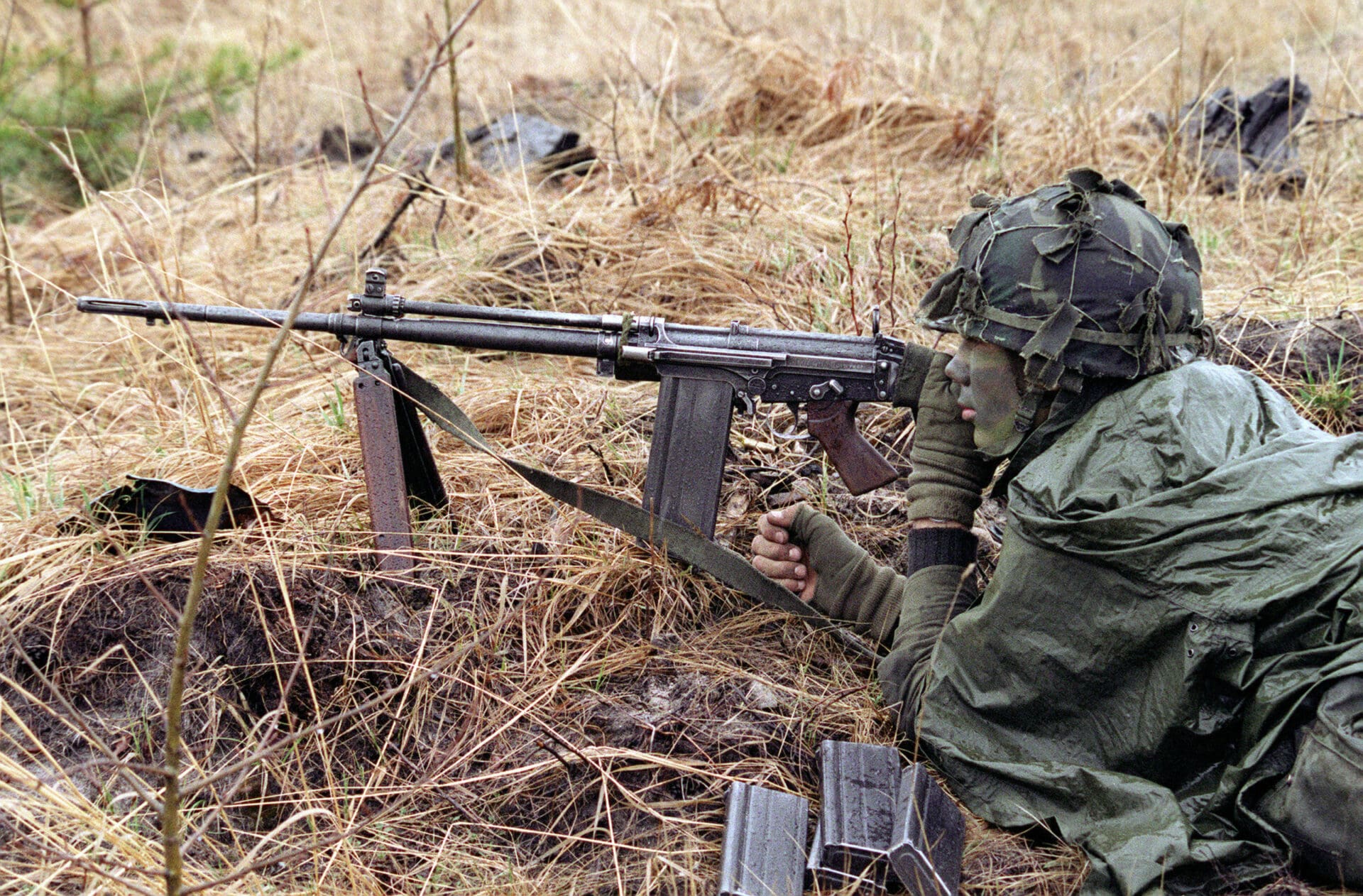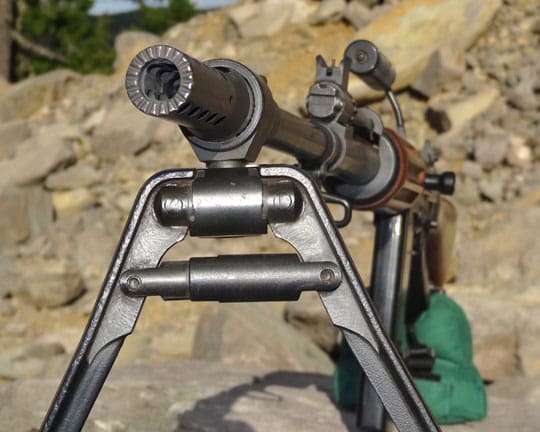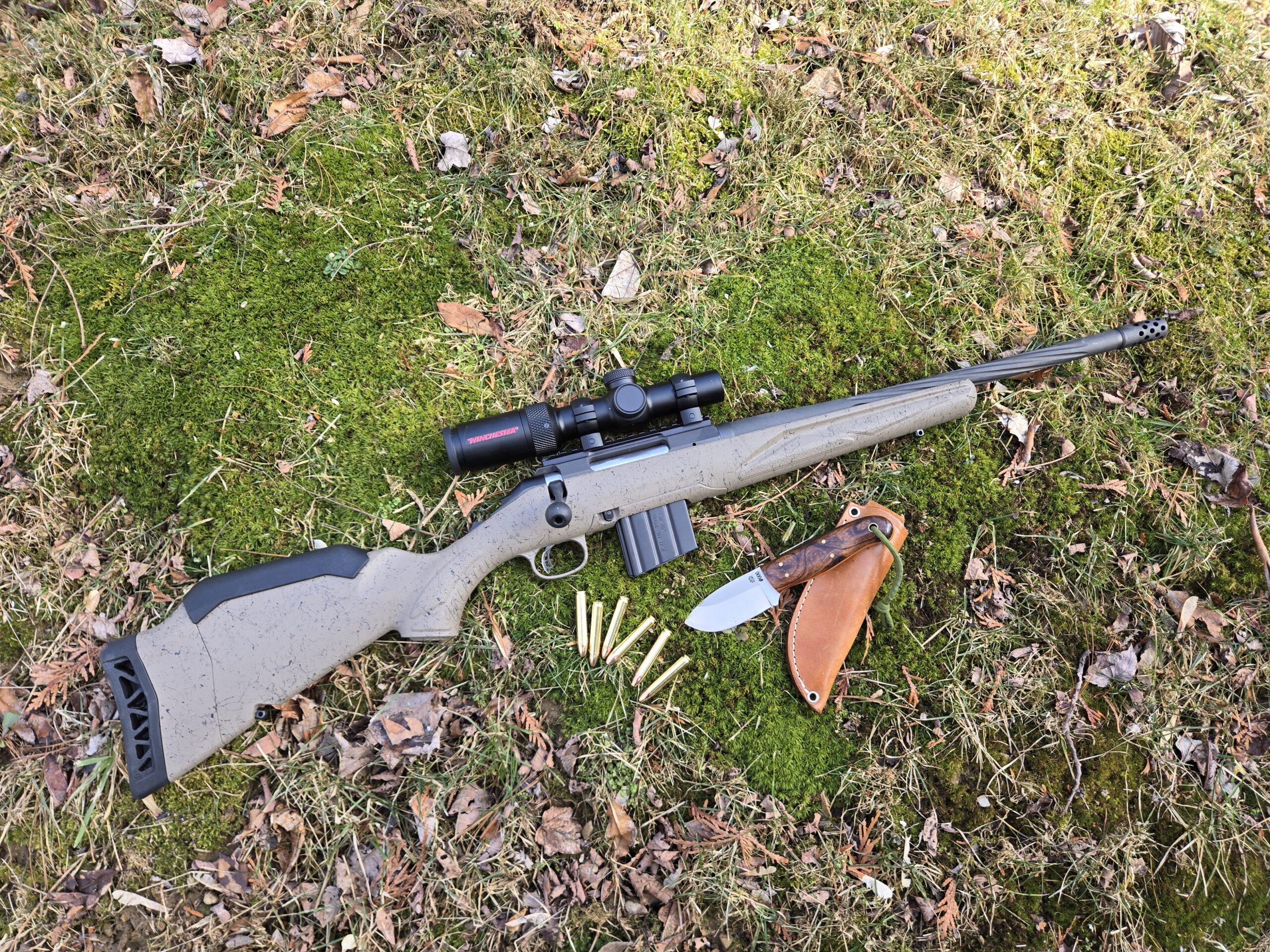Most gun enthusiasts are familiar with the FN FAL, which has been widely imported into the United States. Excellent U.S. made clones are produced by DS Arms, and various other manufacturers have turned out parts-kit guns, too. However, less well-known is the fact that Fabrique Nationale d’Herstal, Belgium (aka “FN Herstal” or simply “FN”) manufactured a heavy-barreled version of the FAL known as the FALO.
Also known as the Model 50.41 or 50.42 (depending on the furniture), the term “FALO” is an abbreviation of the French name Fusil Automatique Lourd. While Browning BARs may be completely out of reach for most of us 99 percenters, semi-auto versions of the FN FALO can still occasionally be found at relatively reasonable prices at gun shows or Internet auction sites. And that makes the FALO an object of desire in my book.
The FN FALO was originally designed in the early 1960s for military use as a squad automatic weapon. Unlike the FAL, the FALO is equipped with a heavy tapered barrel, making it capable of producing accurate automatic fire at more prolonged rates than its little brother.
The concept of a lightweight, mobile squad automatic rifle began in 1918 with the legendary Browning Automatic Rifle (“BAR”). The post-WWI years saw the advent of many lightweight, magazine-fed machine guns suitable for the assault, including the Czech Vz 26, the French MLE 1924/29, the British Vickers-Berthier, the British Bren, the Japanese Type 96, and the German FG-42.
Most of these weapons were rather portly, though, weighing in the neighborhood of 22 to 28 pounds loaded. In contrast, the more modern FN FALO design tipped the scales at a mere 15 pounds loaded, representing a significant improvement in mobility over other designs.

The FALO was also unique in that it was the first of these designs to be adapted from the lighter infantry version of the rifle. Having both interchangeable magazines and increased parts interchangeability with the main battle rifle provided significant advantages in combat.
Nonetheless, while sales of the FN FAL were brisk in the 1950s through the 1970s, the FALO was only adopted by a few countries under license.
The FAL saw extensive action in conflicts all over the world, including Vietnam, the Cambodian civil war, Arab-Israeli Six-Day War, right up through the Falklands war, the Gulf War, both Chechen wars, and the Balkan wars. But not much appears to have been written about the combat history of the FALO. The British captured a number of Argentine versions in the Falklands War, and photos of Israeli troops using their licensed version can also be found.
The civilian version of the FN FALO is functionally and visually identical to its military big brother, except that it doesn’t have the giggle switch. It’s chambered in “.308 Match” instead of 7.62 x 51 NATO, which I understand to be a nod to laws that seek to discriminate in favor of weapons that have a “sporting purpose.”
Most of the civilian-legal versions were imported in the late 1970s and 1980s. I believe they were still imported up through the mid-1990s, but the MSRP increased dramatically due to bad exchange rates against European currencies.
Prices for the FALO have increased significantly over the years, especially for the 1800(+) samples of the so-called “sear cut” guns in civilian hands. Nonetheless, even non-sear-cut specimens in like-new to excellent condition will bring top dollar from FAL collectors; guns that sold for $2,000 in the past can easily command double that today.
Of course, that, and the current cost of ammunition, makes shooting this bad boy an increasingly questionable practice from an investment standpoint. But what the hell, it’s only rock and roll and I like it.
With a bit of practice, the FALO can be shot rapid fire in semi-automatic mode and keep all the rounds in a 5 to 6-inch circle at 100 yards.
Specifications: FN FALO
Weight: 6 kg (13.4 lbs)
Length: 1,150 mm (45 & 9/32 inches)
Barrel: 533 mm (20.8 inches), 4 groove, RH 1 in 12 twist
Cartridge: military version: 7.62x51mm NATO; civilian version: .308 Win with “match” chamber
Action: Gas-operated, short stroke piston, tilting breechblock
Muzzle velocity: 823 m/s (2,700 ft/s)
Effective range: 600 meters.
Feed system: 20, 25 or 30-round detachable box magazines
Sights: Aperture rear sight with 0-600 meter ramp adjustment, hooded post front sight











